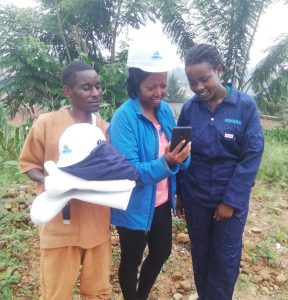Grassroots as well as top-down action is needed to secure the mineral chain and the race to net zero
The price of cobalt is on the rise, driven by the increasing demand from electric vehicle makers and the consumers who want to drive them. Much of this rare mineral comes from the Democratic Republic of Congo.
This perfectly encapsulates the immense challenges of our compromised tech transition, with implications from the artisanal miner through to the consumer.
But the issue of mineral supply chains has long been on the radar of regulators and international standard setters.
In April the OECD hosted the 14th Forum on Responsible Mineral Supply Chains, also marking a decade of the implementation of the Due Diligence Guidance for Responsible Mineral Supply Chains.
In parallel there is also a significant global focus on the climate and net zero, especially with COP26 taking place in November, hosted by the UK.
The Biden Administration is also paying particular attention to mineral supply chains because of the emphasis it is putting on its climate and technology policies.
The European Union – like many other countries – is aiming for net-zero emissions by 2050. Separately it also implemented the EU Conflict Minerals Regulation applying to importers of tin, tantalum, tungsten and gold at the start of this year.
The EU is going a step further with a wave of new regulation to hit this net zero target. From 2023 all batteries imported into EU will require their carbon footprint to be recorded; from 2027 there will be maximum thresholds for this carbon from batteries; and from 2030 there will be minimum thresholds of recycled metals (such as cobalt, tin and lithium).
As of today, despite the best intentions of this regulatory drive, it is just not possible. In order to measure a carbon footprint on a battery you must record carbon output at the mine site, through processing facilities, through secondary processors, into battery component manufacturers, battery manufacturers and finally into electric cars. This is incredibly complex when you consider there are well more than one million mine sites around the world.
This supra-national and national focus on minerals is really important in terms of setting the frameworks for ensuring responsibility and transparency are the key elements in the extraction of minerals.
But as well as action at 30,000 feet, there also has to be action on the ground.
There are options available to us today that weren’t possible when the OECD hosted the first Forum on Responsible Mineral Supply Chains over a decade ago.
That is what Minexx does. We secure the mineral supply chain from the moment a mineral comes out of the earth to the moment it is used in a piece of technology, using a blockchain platform to bring traceability, transparency and trust.
Earlier this year – and in a world first – we exported minerals with full financial transparency and traceability from the Democratic Republic of Congo, by processing $250k of blockchain certified payments, powered by Finboot’s MARCO platform.
As we develop, artisanal miners will get access to finance, services, equipment and a fair market.
There is a tremendous opportunity to redesign the ecosystem for the better, from the ground up as well as the top down, benefiting the miners, smelters, traders, governments and tech companies. This is about bringing 21st century sophistication to the most unsophisticated $100bn market in the world – and this applies as much to the regulators as it does to those, like us, who are operational on the ground.






